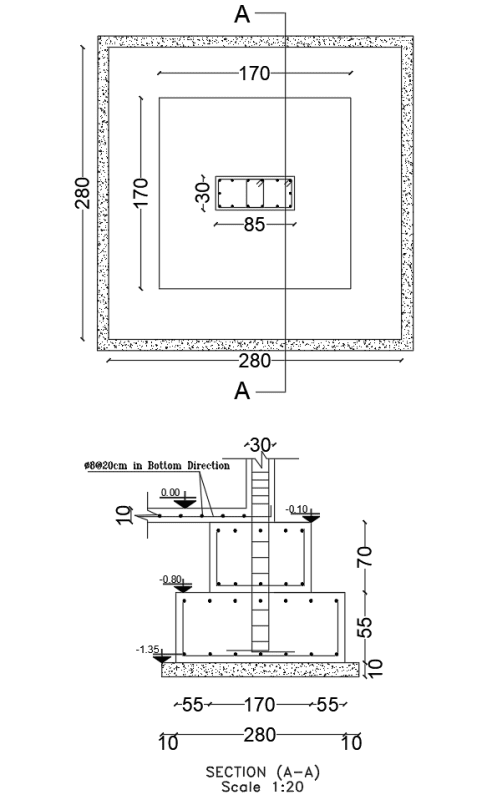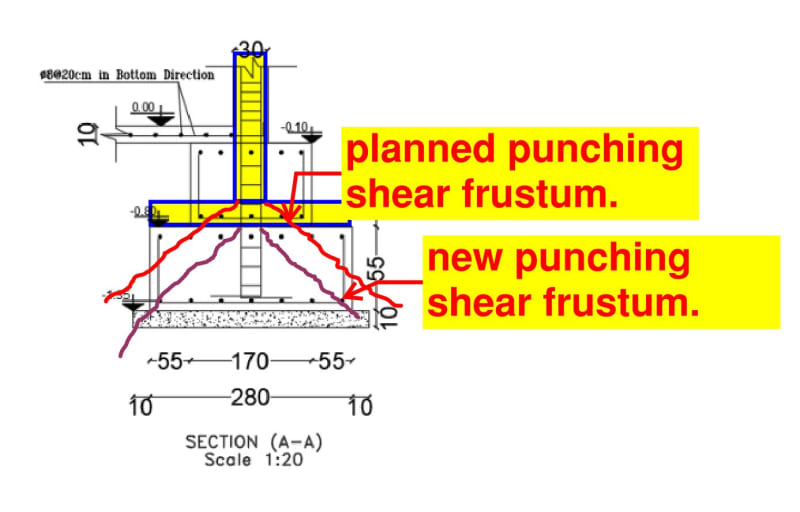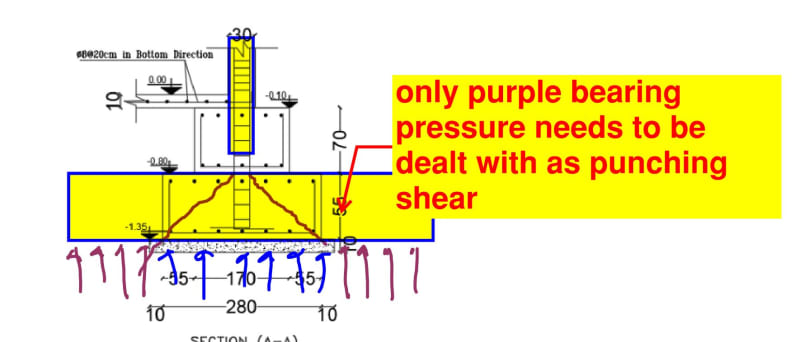Further into the thread I think it's clarified that this is a one way shear problem. That being said, the code one way shear provisions are conservative for this type of deep beam situation with a short span. If it's failing out of the near field zone there are a couple of ways to take advantage of that conservative situation. One is a strut and tie model. The Canadian concrete handbook has this exact situation demonstrated in the examples, with a deep footing failing with the code provisions and then an example strut and tie model passing it.
The other option would be to go outside of local code to one of the codes that has more in depth provisions for shear near supports without strut and tie. The british code for instance has magnified shear resistance near supports that decreases as you move away. (edit looks like eurocode does something similar, but by reducing the design shear demand within a couple of 'd' distance from the support... also I'm assuming your local code is US based because you're using kips, but your drawings are in cm, so I'm not actually sure)
There's also some stuff you could potentially do with increasing bearing pressures in coordination with the geotech, but how comfortable I'd personally be with that depends on the loading conditions this thing is under and what the failure mechanisms would look like.



